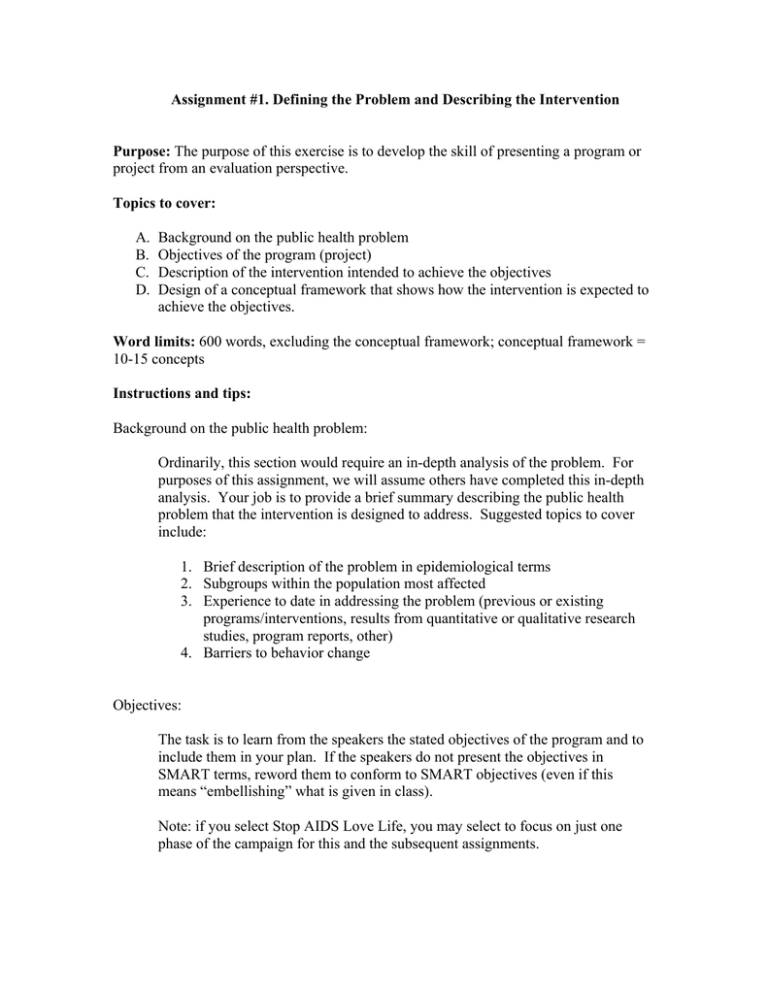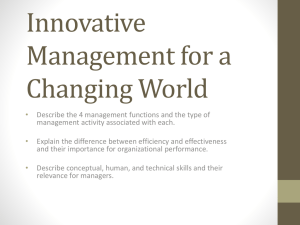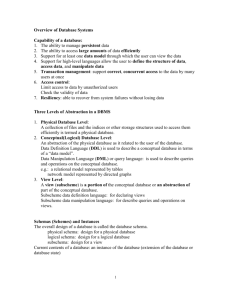Assignment #1. Defining the Problem and Describing the Intervention Purpose:
advertisement

Assignment #1. Defining the Problem and Describing the Intervention Purpose: The purpose of this exercise is to develop the skill of presenting a program or project from an evaluation perspective. Topics to cover: A. B. C. D. Background on the public health problem Objectives of the program (project) Description of the intervention intended to achieve the objectives Design of a conceptual framework that shows how the intervention is expected to achieve the objectives. Word limits: 600 words, excluding the conceptual framework; conceptual framework = 10-15 concepts Instructions and tips: Background on the public health problem: Ordinarily, this section would require an in-depth analysis of the problem. For purposes of this assignment, we will assume others have completed this in-depth analysis. Your job is to provide a brief summary describing the public health problem that the intervention is designed to address. Suggested topics to cover include: 1. Brief description of the problem in epidemiological terms 2. Subgroups within the population most affected 3. Experience to date in addressing the problem (previous or existing programs/interventions, results from quantitative or qualitative research studies, program reports, other) 4. Barriers to behavior change Objectives: The task is to learn from the speakers the stated objectives of the program and to include them in your plan. If the speakers do not present the objectives in SMART terms, reword them to conform to SMART objectives (even if this means “embellishing” what is given in class). Note: if you select Stop AIDS Love Life, you may select to focus on just one phase of the campaign for this and the subsequent assignments. Description of the intervention: This section explains to the reader the different activities that will be carried out with the aim of achieving the program objectives. This information is important for understanding the program and (later) designing the process evaluation. For the purposes of this assignment, limit the description to a summary overview. Conceptual framework: The conceptual framework is the most challenging aspect to this assignment. Allocate the greatest portion of time on this assignment to getting it right. Here are some tips: 1. On a single page, draw a conceptual framework that illustrates how the program is expected to achieve its long-term objective (e.g., reducing the prevalence of TB or HIV). Use a system of boxes/circles and arrows to identify the pathways by which the intervention is expected to have an impact. 2. Use the boxes to show general concepts (e.g., knowledge). (In the next exercise [#2], you will convert these concepts into measurable indicators). 3. Use the conceptual framework to reflect the main objectives of the program (expected results). 4. Incorporate the concept of initial, intermediate, and long-term outcomes in your conceptual framework (you can do so by using column headings or labels at the bottom of the page). 5. Focus on results in this exercise; do not worry about the details of outputs that will get you there (e.g., number of workshops, number of people trained, number of spots broadcast) 6. Incorporate the idea of “context” into your framework. 7. Illustrate where the intervention fits within the conceptual framework. 8. Use the arrows in a causal sense; that is, use arrows to show that “Box A” influences “Box B.” Do not use arrows between boxes if there is not a plausible causal relationship (for example, exposure to a radio program does not determine or influence the age of the listener!). 9. Make the figure flow from left to right. (Note: this is arbitrary; some graphs flow vertically). Factors on the left influence those further to the right. 10. Focus on the most important concepts. For simplicity, limit the number of concepts mentioned to 15 or less (recommended range: 10-15 concepts). Note: you may want to further explain a general concept (e.g., knowledge) with additional details (e.g., the types of knowledge), but you don’t need to be exhaustive. The purpose is to demonstrate your understanding of how to “illustrate” how a program is expected to work in visual/graphic form. 11. Don’t include any narrative with the conceptual framework (i.e., paragraphs that explain the framework). The figure should be self-explanatory. 12. Give a title that explains what the conceptual framework is supposed to show. 13. You may discuss this exercise with others in the class; however, the final product must be your own work. (Two identical frameworks would be suspect.) 14. You may submit a hand-drawn figure, but the wording must be legible. (If you choose this option, plan to pass in your assignment at the beginning of the class on the due date.) 15. Be as clear and concise as possible. (Test your diagram: is it easy to understand the main ideas at a glance?)








